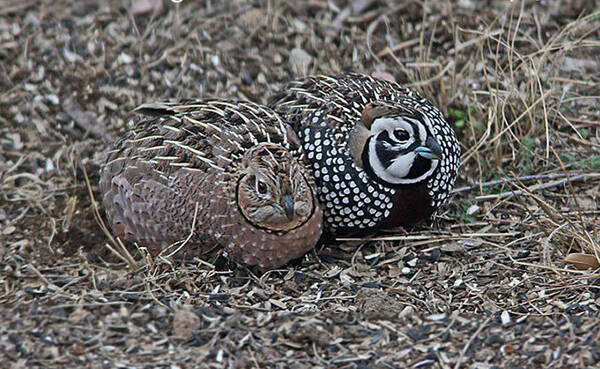Cyrtonyx sallei
IUCN
LCBasic Information
Scientific classification
- name:Cyrtonyx sallei
- Scientific Name:Cyrtonyx sallei,Spot-breasted Quail
- Outline:Landfowl
- Family:Chickeniformes Ornithidae Ornithidae
Vital signs
- length:20-22cm
- Weight:170-190g
- lifetime:No textual research information is available
Feature
Distribution and Habitat
It is found in the southern Mexican states of Michoacan and Guerrero and the western Mexican states of Oaxaca.
It inhabits temperate forests, savanna oak forests or oak pine forests.
Appearance
The quails weigh 170-190 grams and are 20-22 cm long. This species exhibits strong sexual dimorphism in plumage coloration, although the spots in both sexes are very complex. The male bird is characterized by a distinctive black and white face. The ventral outline feathers are dark gray with white spots. The female bird is smaller and has a different feather color than the male, instead of a black and white face, with a brown pattern of different tones. The whole is also more tan. Both sexes have blue beaks; A short tail; Large claws used to dig underground for food sources.
White quail is similar to white quail. Compared to the lower white spots on the chest and flanks, there are relatively broad brown and narrow long stripes, narrow black stripes, the white spots on the upper body, the spots on the side of the chest are smaller and lighter, the gray and chestnut colors from the middle chest to the abdomen are lighter, the spots on the upper chest and side abdomen are not pale tan,
Details
Cyrtonyx sallei: Formerly a subspecies of the Montejo quail, it became a separate species in 2014.

The quails feed mainly on sorrel and sedge seeds. These birds are often seen digging in moist soil, their long, slender claws suitable for digging out plant roots and tubers. Insects and pupae are also another important food source.
Listed on the International Union for Conservation of Nature (IUCN) 2016 Red List of Threatened Species ver 3.1 - Near Threatened (NT).
Protect wild animals and eliminate wild meat.
Maintaining ecological balance is everyone's responsibility!








